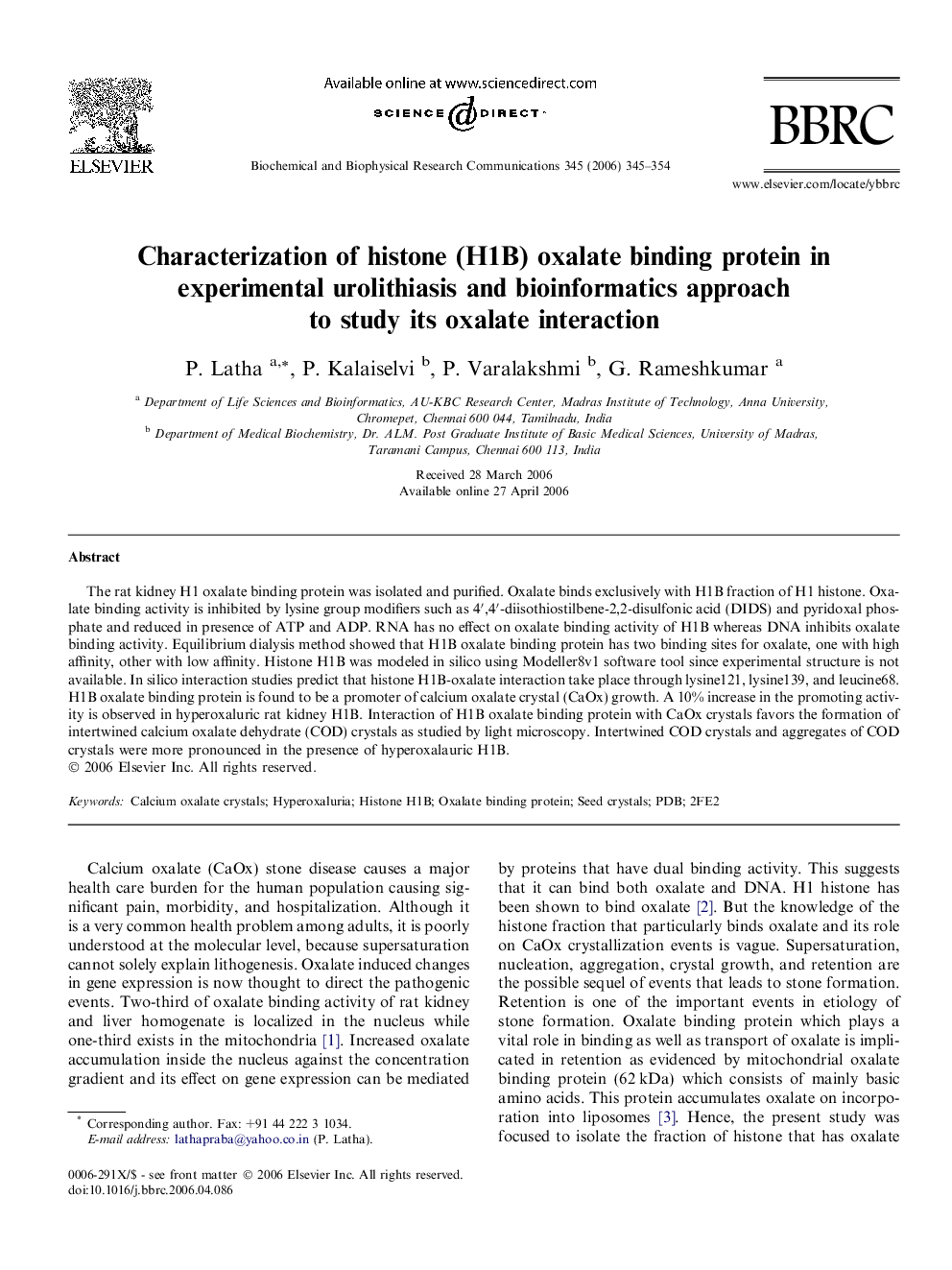| Article ID | Journal | Published Year | Pages | File Type |
|---|---|---|---|---|
| 1939367 | Biochemical and Biophysical Research Communications | 2006 | 10 Pages |
The rat kidney H1 oxalate binding protein was isolated and purified. Oxalate binds exclusively with H1B fraction of H1 histone. Oxalate binding activity is inhibited by lysine group modifiers such as 4′,4′-diisothiostilbene-2,2-disulfonic acid (DIDS) and pyridoxal phosphate and reduced in presence of ATP and ADP. RNA has no effect on oxalate binding activity of H1B whereas DNA inhibits oxalate binding activity. Equilibrium dialysis method showed that H1B oxalate binding protein has two binding sites for oxalate, one with high affinity, other with low affinity. Histone H1B was modeled in silico using Modeller8v1 software tool since experimental structure is not available. In silico interaction studies predict that histone H1B-oxalate interaction take place through lysine121, lysine139, and leucine68. H1B oxalate binding protein is found to be a promoter of calcium oxalate crystal (CaOx) growth. A 10% increase in the promoting activity is observed in hyperoxaluric rat kidney H1B. Interaction of H1B oxalate binding protein with CaOx crystals favors the formation of intertwined calcium oxalate dehydrate (COD) crystals as studied by light microscopy. Intertwined COD crystals and aggregates of COD crystals were more pronounced in the presence of hyperoxalauric H1B.
